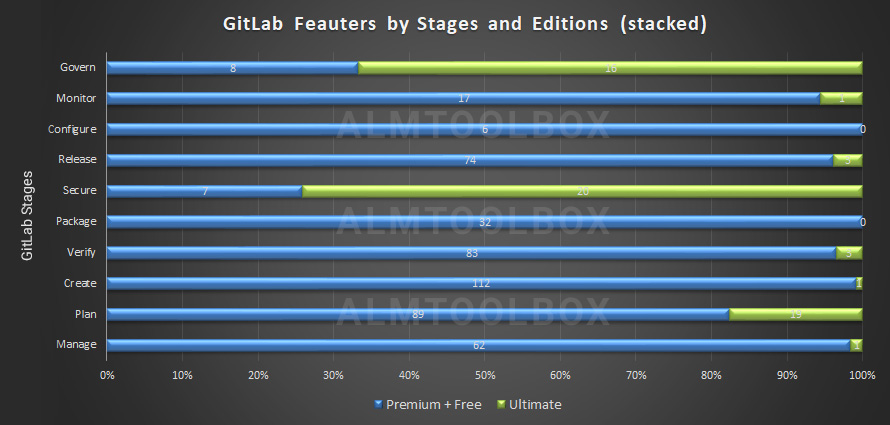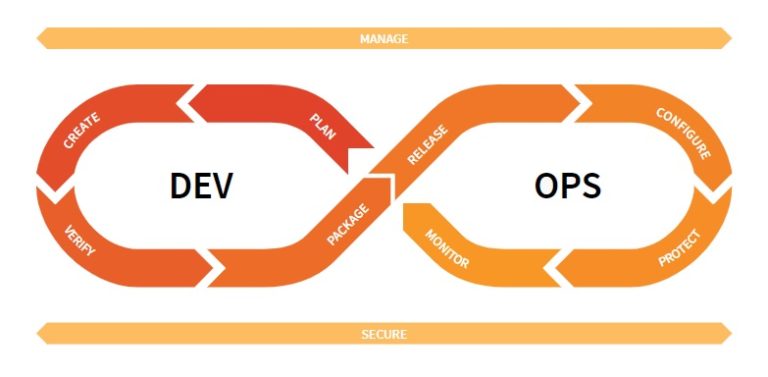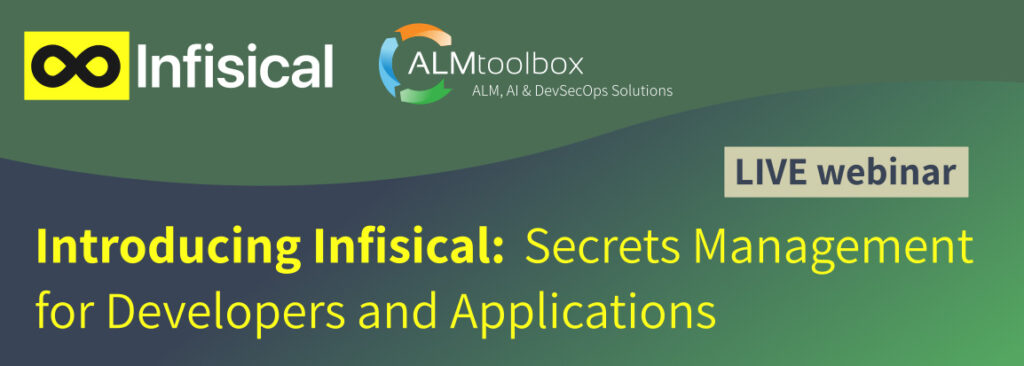I am often asked about the benefits of GitLab Premium. I recently analyzed all the features in GitLab to quantify and visualize the value of GitLab Premium
(in addition to a list of features that can be seen here and in addition to the sorted and detailed spreadsheet we send to our customers).
It is said that a picture is worth a thousand words – so you can see it now (click to enlarge):

Y-axis reflects the 10 existing stages (Manage, Plan, Create, etc.). X-axis reflects weighted percentage (normalized and 100% proportional for each Stage)
What we see here:
Firstly I took the list of all the existing features in GitLab (currently, as of version 15.9 released on 03/22/2023, there are a total of 557 such features).
Then I took all 10 stages of the existing DevOps Lifecycle in GitLab (as defined by GitLab in the diagram below ** ),
and for each stage, I checked how many of its features are in the Premium edition (the blue areas in the graph above and how many in Ultimate (in green).
Since the number of features varies from stage to stage, I normalized this to see it in percentages so that they could be displayed in one graph, one above the other.
And the result is in front of you (above).
As mentioned, the Y-axis reflects the 10 existing stages (Manage, Plan, Create etc.).
The X-axis reflects weighted percentage (normalized and 100% proportional for each Stage).
What can be seen here?
- There are some Stages that are almost fully available when taking the Premium version (i.e. 100% of the features are inside or very close to it).
These are the following stages:- Create (Version Control / SCM: Create, view, and manage code and project data through powerful branching tools): 99%
- Verify (CI: Keep strict quality standards for production code with automatic testing and reporting): 96.5%
- Package (Artifacts: Create a consistent and dependent software supply chain with built-in package management): 100%
- Release / Deploy (CD/ Continuous Delivery: GitLab’s integrated CD solution allows you to ship code with zero-touch): 96%
- Configure (Settings: Configure your applications and infrastructure): 100%
- Manage (system access, integrations, importers, user management, subgroups, projects and more): 98.4%
That is, the GitLab Enterprise Premium version covers almost 100% of the features in 6 areas of the DevOps Lifecycle
- In fact, you can also see that in the Premium version you also get almost completely full coverage in the Monitor stage: it has all the features except one (“Status page” feature).
- On average about 88.7% of the total features in GitLab exist in Premium (including Free edition).
- You can see that those who are interested in the extensive collection of security tests and governance available in GitLab,
should choose the GitLab Ultimate version.
Additional notes:
- The Premium version is available in Self-hosted (as your private machine) or in the public cloud gitlab.com (the version formerly called “Gold”). The example here refers to Self-hosted. It is important to remember that in gitlab.com cloud, some of the above features do not exist.
- ** The DevOps Stages according to GitLab:
For more questions about GitLab (both on the technology side and regarding differences in the Enterprise versions and regarding GitLab pricing or quotes) you can contact us at gitlab@almtoolbox.com or by phone at 866-503-1471 (USA / Canada) or +972-722-405-222 (International)
This article was originally published here on 2021. This 2023 article contains up-to-date information.




